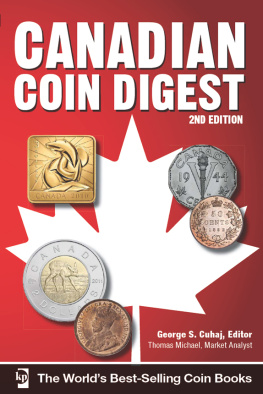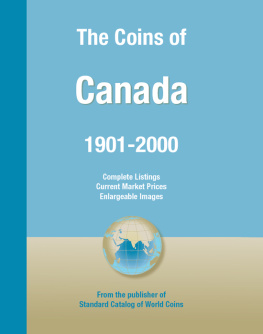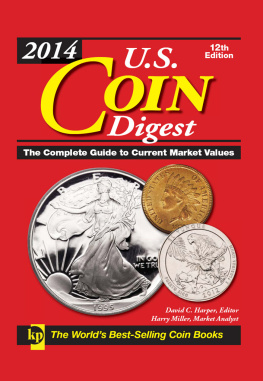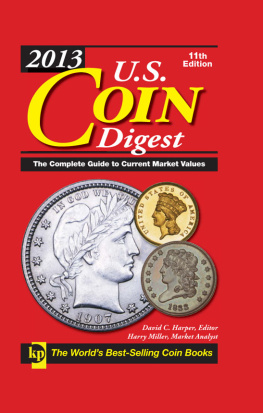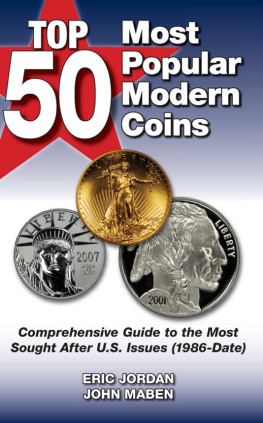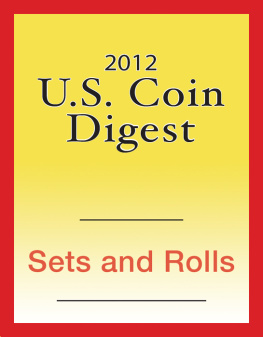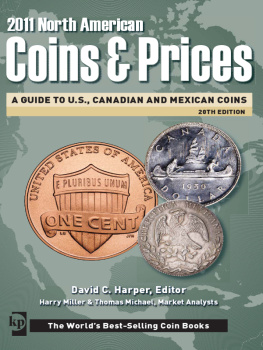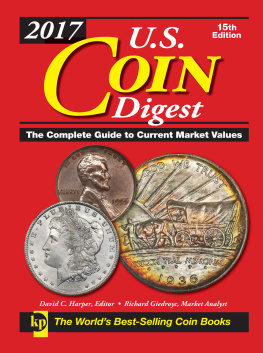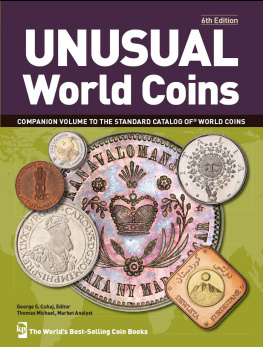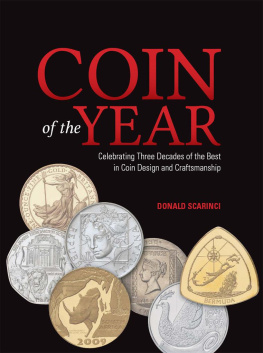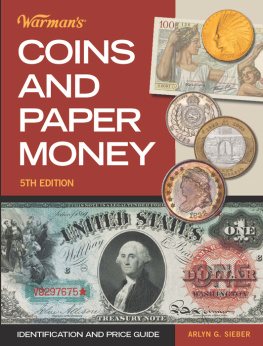The listings are in the Standard Catalog format, which collectors have come to recognize. The listings are presented in denomination and date order, and then include weight, fineness and size; descriptive information and designer names follow.
Then what most collectors are really interested in - the date, mintmark and variety mintage and price information! The headings are the commonly used commercial grading terms, with both descriptive and numerical equivalents so collectors can be confidant on accurate determination on the items they are interested in buying or selling. Enjoy this book, and remember you can always check for new listings on-line at www.numismaster.com and look for additional books at www.shopnumismaster.com.
George S. Cuhaj, Editor
Thomas Michael, Market Analyst
Introduction
The starting point for the national coinage of Canada is popularly fixed at 1858. In that year a large cent was first produced for use in Upper and Lower Canada (Ontario and Quebec). These pieces were intended to supplant local copper coinage, which in turn had been attempts to give various regions a medium of exchange.
What was circulating in Canada at the time was a hodgepodge of world issues. The large cent predates a unified national government by nine years, but it is considered the beginning of national issues nevertheless.
There are many similarities between the United States and Canada and their respective monetary systems. Both continent-sized nations thought in terms of taming the frontier, new settlements, and growth. Both came to use the dollar as the unit of account because of the pervasiveness of the Spanish milled dollar in trade. For each, the dollar divides into 100 cents.
However, Canada had a far longer colonial history. Many of its residents resisted the tide that carried the United States to independence and worked to preserve their loyalties to the British crown. As a result, Canada was firmly a part of the British Empire. So even today with its constitution (the British North America Act transferred from Westminster to Ottawa in 1982), parliamentary democracy, and a national consciousness perhaps best symbolized by the maple leaf, Canada retains a loyalty to the crown in the person of Queen Elizabeth II of the United Kingdom. Canada is a member of the British Commonwealth of Nations.
The effect of this on coins is obvious. Current issues carry the queens effigy. How Canada got its coins in the past was also influenced. The fledgling U.S. government set about creating its own mint as one of its earliest goals, despite that better-quality pieces could be purchased abroad at lower cost. Canada found that ties to mints located in England were logical and comfortable.
The Royal Canadian Mint was not established until 1908, when it was called the Ottawa branch of the British Royal Mint, and it was not given its present name until 1931. Canadian coins, therefore, have a unique mixture of qualities. They are tantalizingly familiar to U.S. citizens yet distinctly different.
The coinage of a monarchy brings its own logic to the organization of a collection. Type collecting is delineated by the monarch. United Canada has had six. The first was Queen Victoria, whose image appeared on those large cents of 1858. Her reign began in 1837 and lasted until 1901.
She was followed by Edward VII, 1901-1910; George V, 1910-1936; Edward VIII, 1936; George VI, 1936-1952; and Queen Elizabeth II, 1952-present. All but Edward VIII had coins struck for circulation in Canada. The collectible monarchs, therefore, number five, but the longer reigns inspired changes of portraits over time to show the aging process at work. Legends also changed. When George VI ceased being emperor of India, Canadas coin legends were modified to recognize the change.
Like U.S. coins, sizes and alloys were altered to meet new demands placed on the coinage. However, the separateness of each nation might best be summed up this way: Though the United States abolished its large cent in 1857, Canadas was just getting under way in 1858. The United States put an end to the silver dollar in 1935, the very year Canada finally got its series going.
And Canada, the nickel-mining giant, used a small-sized silver five-cent coin until 1921, almost 50 years after the half dime was abolished in the United States. But whereas the Civil War was the major cause of the emergence of modern U.S. coinage as specified by the Coinage Act of 1873, World War I influenced the alterations that made Canadas coins what they are today.
It might be assumed that change in the monarch also signaled a change in the reverse designs of the various denominations. A check of the Canadian price guide section shows this is not necessarily the case. Current designs paired with Queen Elizabeth II basically date back to the beginning of her fathers reign. The familiar maple-leaf cent, beaver five-cent piece, schooner 10-cent, caribou 25-cent, and coat-of-arms 50-cent have been running for nearly 75 years. Significant changes were made to the 50-cent coin in 1959, but the reverse design remains the coat of arms.
So where does that leave type collectors? It puts them in a situation similar to categorizing the various eagles on U.S. coins. They can be universalists and accept the broadest definitions of type, or they can narrow the bands to whatever degree suits them best.
By checking the price-guide section, date and mintmark collectors will quickly note that their method of organization more or less turns into collecting by date. Historically there have been three mints in Canada - Hull, Quebec; Ottawa, Ontario; and Winnipeg, Manitoba but they dont use mintmarks. Historically, few mintmarks were employed.
Ottawa used a C on gold sovereigns of 1908-1919 and on some exported colonial issues. The private Heaton Mint in Birmingham, England, used an H on coins it supplied to Canada from 1871 to 1907.
But the coins supplied to Canada by the British Royal Mint and later by its Ottawa branch did not carry any identifying mark. Collectors who confine their activities to the more recent issues need never think about a mintmark.
It would be easy to slant a presentation on Canadian issues to stress similarities or differences to U.S. issues. One should remember that the monetary structures of each evolved independently, but each was always having an impact on the other.
Common events, such as World War II, had a similar impact. For example, the Canadian five-cent coin changed in much the same way as the U.S. nickel. In Canada, nickel was removed and replaced first by a tombac (brass) alloy and then by chromium-plated steel. Peace brought with it a return to the prewar composition.
To see an example of differences between the United States and Canada, take the Canadian approach to the worldwide trend of removing silver from coinage. Canada made its move in 1968, three years after the United States. Instead of choosing a copper-nickel alloy as a substitute for silver, Canada looked to its own vast natural resources and employed pure nickel.

